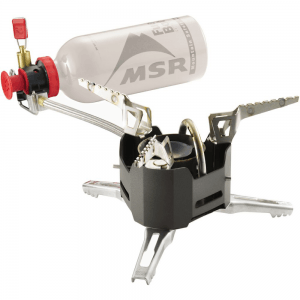Stoves – GearGuide
 Gas and fuel burners for your holiday and outdoor activities are available in many designs with different weights, packing volumes and properties. Depending on your wishes, requirements, travel destination and budget, there are a few questions that you will have to ask yourself.
Gas and fuel burners for your holiday and outdoor activities are available in many designs with different weights, packing volumes and properties. Depending on your wishes, requirements, travel destination and budget, there are a few questions that you will have to ask yourself.
Image: MSR XGK EX liquid-fuel stove
Not every burner can be used anywhere. For example, there are types of gas cartridges and cylinders that are not available worldwide. If you’re not sure what’s available, in the better outdoor shops, they can inform you about which cartridges and cylinders are used where and have adapters available for your stove system.
If you want to be sure about the availability of fuel and be able to take your stove on the plane easily, then a gasoline or multifuel stove is the best option. This kind of stove is more expensive to buy, but it does give you more independence and a lower fuel cost. The most important question you have to ask is what fuel you are going to use. Here’s a list of options with all the pro’s and con’s.
Types of stoves:
- Gasoline
- Natural gas
- Diesel
- Kerosine
- Multifuel
- Petroleum
Gasoline
One of the major advantages of gasoline is that it has a very high heat · yield (calorific value), much higher than gas, and that it is available almost anywhere at the pump. For less than one euro, you can fill your fuel bottle and you’re good to go for a few days. Most of the burners nowadays, and certainly the multifuel models, can handle the relatively dirty unleaded car gasoline. Do not burn leaded petrol as the vapor will get into your food and you will poison yourself in the long run. With some burners you should use boiling point benzine – a very pure gasoline type – because car gasoline will eventually relax the generator of the burner. This is the tube in which the liquid fuel is
With some burners, you should use boiling point gasoline – a very pure gasoline type – because car gasoline will eventually weaken the generator of the burner. This is the tube in which the liquid fuel is turned into gas by the heat of the flame.
Boiling point gasoline is, for example, refined petrol or the well-known Coleman fuel. A disadvantage of gasoline is that you need to preheat your gasoline burners to allow gasoline to gasify, which requires extra work.
